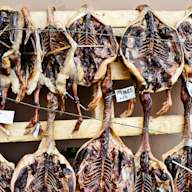Search results
Chinese New Year or the Spring Festival (see also § Names) is a festival that celebrates the beginning of a new year on the traditional lunisolar Chinese calendar.
Discover the traditions and taboos, dishes and drinks that are part of China's most important holiday, the Chinese New Year, or Spring Festival.
Jul 13, 2024 · Chinese New Year, annual 15-day festival in China and Chinese communities around the world that begins with the new moon that occurs sometime between January 21 and February 20 according to Western calendars.
Feb 4, 2010 · China’s Lunar New Year is known as the Spring Festival or Chūnjié in Mandarin, while Koreans call it Seollal and Vietnamese refer to it as Tết. Tied to the lunar calendar, the holiday began...
Chinese New Year or Lunar New Year or Spring Festival 2025 falls on Wednesday, January 29th, 2025. Snake is the new year animal. Learn more about Chinese Lunar New Year traditions, taboos, food, zodiac signs, and greetings.
Feb 13, 2024 · The seventh day of the Lunar New Year (February 16 in 2024) is said to be when the Chinese mother goddess, Nuwa, created humanity. Thus, it’s called renri/jan jat (the people’s birthday).
Jan 31, 2022 · Tuesday 1 February marks the Lunar New Year for 2022 - celebrated in China, East Asia and across the world. The celebrations see people feast with relatives, watch parades and pray for good...
In China, Lunar New Year is known as Chinese New Year or in Chinese 'Spring Festival' (Chunjie). The celebrations traditionally last for 16 days, beginning on New Year's Eve and ending with the Lantern Festival.
Jul 1, 2024 · Lunar New Year, festival typically celebrated in China and other Asian countries that begins with the first new moon of the lunar calendar and ends on the first full moon of the lunar calendar, 15 days later.
Lunar New Year celebrations in East and Central Asia, such as Chinese New Year, are based on a lunisolar calendar. Chinese New Year usually falls on the second new moon after the winter solstice (rarely the third if an intercalary month intervenes).





















